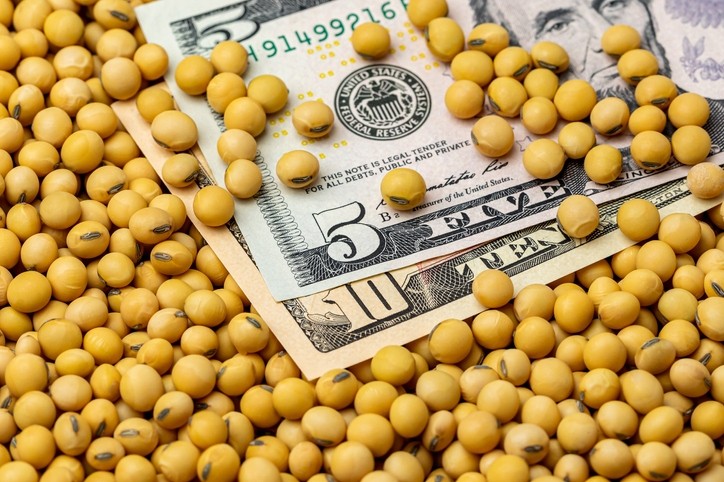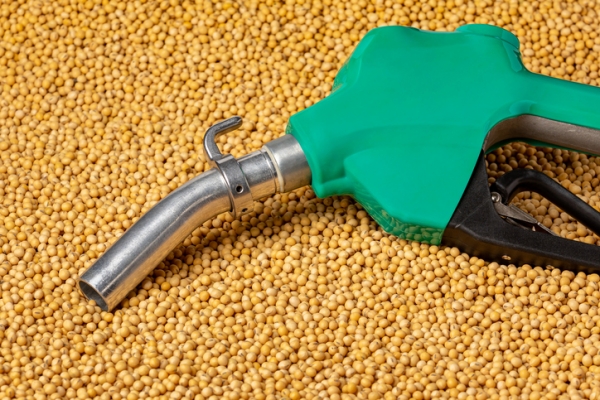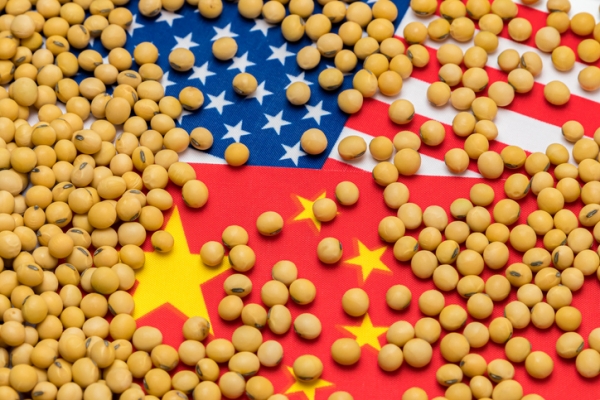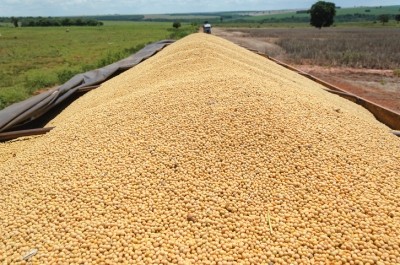The veteran’s view: US soy industry slowing shifting away from volume over value model

For one, the domestic soybean crush sector is about to experience a major overhaul given the projected processing expansions.
Denny recently gave a presentation at Kansas State University where he highlighted some interesting aspects related to that impending structural shift, the inevitable increase in available soybean meal, as well as how discussions surrounding soy are being framed as food versus fuel but that they should be framed as food and fuel.
He is well positioned to recognize such sectoral transformation. Half of his 43-year long career was spent in the trading and commercial management side of the soy industry, combined with the other in the plant management and industrial side of the US soybean processing business. His experiences have allowed him to interact with seed and fertilizer companies, farmers, truckers, railroads, exporters, futures traders, engineers, processors, livestock growers, and various trade organizations on a detailed and highly involved level.
“The industry is very disconnected in multiple ways. And that is something I've been fighting for years to try and help facilitate improvements and changes.”
Volume over value
There has long been a focus on volume over value in the US soybean supply chain.
The leading seed technology companies, according to Denny, introduced raffinose and stachyose into soybeans to improve field yields even though it diminished the overall quality and thus the value of the soybean crop. “All they wanted to do was have higher field yields, and that is easy to do with the infusion of raffinose displacing protein.”
Their perspective was that processors do not pay farmers for protein. “But they really do. It is just not so overt. When I was the buyer for Bunge, sourcing domestic soybeans, I knew where to seek out better quality soybeans and where the lower quality ones were, and we valued accordingly. A processor does not care about field yield. We care about processor yield, which is how much meal, and what quality meal, and what volume of oil do you get out of a bushel of soybeans. And that is where the value lies.”
So that disconnect between the seed technology companies, the farmers, and the processors illustrates how the numerous and varied entities of the US soybean value chain did not always share goals or communicate well. They often viewed the next link in the chain as a competitor, not as a collaborator, said Denny.
“That lack of trust, openness and communication has inhibited improvements in quality and value of US soybeans.”
The goal was to make the lowest quality soybean meal at the lowest cost, right before the quality discounts were triggered, he said. It has led to a steady deterioration of protein levels over the past three decades, according to Denny.
“But we are now starting to break down those barriers. This disconnected soy value chain is starting to form partnerships and is on the path to transition, to change like I've never seen before, and I am a long time in the business.”
Demand for soybean oil as renewable diesel fuel feedstock
What has been the prompt for that structural shift? Soybean oil is required to supply the rapidly growing demand for renewable diesel fuel. And pushing the renewable industry along is the expansion of the low carbon fuel standard in states like California, Oregon, and Washington.
Indeed, USDA chief economist Seth Meyer outlined at an Ag Outlook Forum in Kansas City in 2021 the impact that renewable diesel is expected to have on the soybean market. He estimated that due to the state’s low carbon fuel standard, California’s thirst for renewable diesel is at a level more than double current domestic production, putting pressure on US soybean growers and crushers to meet demand.
Moreover, as the sustainable available fuel sector scales, demand for soybean oil as a feedstock will only accelerate, with the airline industry now clamoring to lower its emissions.
“We don't need more starch per se in the world, we need protein and energy. Those are the two driving building blocks of the world. And it is not so much the increase in population, although that is a primary big factor where we've got to be more efficient and more productive, but we also have got to fuel the world in a more sustainable way. That's providing this new impetus,” said Denny.
The US soybean supply chain has a new understanding and appreciation of value and a new emphasis on quality, he believes. “We can have both field yield and much higher protein and much higher oil content, we can go to 22% oil, where today we are at around 18.5% or 19% on some good beans. The industry can capture that value.”
Last month saw Perdue AgriBusiness back technology designed to boost oil and protein content of soybeans without risking yield.
It established a collaboration with US startup, Zeakal, which tweaks genetic crop traits to improve their rates of photosynthesis. In soybeans, it claims its PhotoSeed technology has consistently resulted in improved oil and protein content while improving the sustainability index of the crop.
The San Diego based biotech reported that, during the 2021 growing season, PhotoSeed soybean events increased oil composition by 12% while increasing protein by one point.
Perdue AgriBusiness handles about three million acres’ worth of soybeans per year. Transforming this acreage to PhotoSeed soy, it said, means growers will benefit from a higher value crop and Perdue gains access to beans with improved oil and higher protein in the resulting meal.
Ensuring high protein content requires a relationship between the two most valuable segments in the soy value chain - the processors and the nutritionists, said Denny.
“And looking to a third valuable segment, the petroleum refiners, they now realize that to improve their reputation, their sustainability index, their participation in the future of energy, they have got to have a relationship with soybean processors.”
Soybean oil versus meal pricing trends
Should growth in renewable fuel demand continue resulting in new demand for feedstocks such as soybean oil, the historical relationship between soybean oil prices and soybean meal prices could trend toward soybean oil:
“For the years that I was a processing plant manager and a trader, in a bushel of soybeans, one third of the value was in oil, and two thirds in soybean meal. We are nearly at parity today. But I think we're going to hit an opposite ratio compared to where we were a few years ago where the oil value could become two thirds the value of a bushel and the protein one third,” remarked Denny.
Boosting the protein content
Some stakeholders claim they cannot monetize protein, he added, but he insists they are wrong. “Such monetizing will be done through partnerships, with nutritionists paying for higher quality, higher value, because it improves the conversion ratios and weight gain of animals.”
The projected expanded crush capacity, with 10-15 new processing plant builds flagged for the US over the coming years, is also repositioning the US soy sector, putting it on a more competitive footing globally, and encouraging cultivation of soy with higher protein content, he said.
“We're going to overbuild the industry by I think about 24 to 25%. We can only increase domestic consumption by 2-2.5% a year, and primarily in poultry. The US can't ramp up meat production very quickly. We're going to have more soybean acres, we're going to have more soybean meal exports because of these new processing plants, even if not all of them will be built. And I think, as we export, the meal with the lowest quality is going to be the hardest to sell and the meal that will attract the lowest value. However, because of this cathartic shift in the industry, I am convinced that there will be new incentives for processors to do a better job and seed companies to try to make a better-quality protein.”
If the US soybean value chain improves the protein and oil content of the soybean, the farmer puts more protein and oil into his bin, the truck holds more protein and oil, the processing plant actually improves in terms of efficiencies because these beans are more nutrient and physically dense than they used to be, and, thus, will likely lead to higher inclusion levels in feed, commented Denny.
Weighing up export market potential, Asia is the number one growth area for US soybean markets, he said. Countries like Nigeria also hold a lot of promise - its population is exploding, it is becoming more affluent, with consumers improving their diets and changing their consumption patterns. “Hopefully, we don't burn too many economic relationships because of political issues.”















